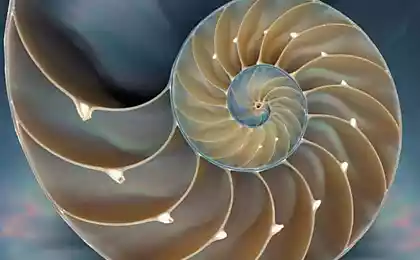524
How to get electricity from ordinary salt water
Where the mixed salt and fresh water deposits lurk constantly updated energy. So, at least, according to nano-engineer Alexander Radenovich at the Swiss Federal Institute of Technology.

July 13 Radenovich published a draft of a qualitatively new type of electric generator, which is more like the thinnest membrane. The generator draws energy from osmosis process - when the salt from the salt water into fresh water is distributed evenly through the membrane. Generator for its very thin part does not exceed three atoms in width, and it can be used in the mouths of rivers or other places where water is constantly mixed with different salinity.
Radenovich writes that electricity generation from such a generator can be enormous. Such a device is an area of only 0, 3 square meters can theoretically produce a megawatt of energy. That's enough to power the 50,000 energy-saving light bulbs. The generator is described in an article published in the journal Nature.
Radenovich membrane - a thin sheet, strewn with huge number of incredibly tiny holes. It is made from a relatively inexpensive material called molybdenum disulfide. Through holes are only a certain amount of salt.
And with molybdenum disulfide holes are electrically charged, pushing certain types of salts. These holes are called nanopores. Salts, passing through the membrane, even through a single nanopore already generate a small amount of electricity. This is because salt has a small electric charge, and thus they create an electrical current through this movement.
Nanopore only produces about 10 or 20 NW. Accordingly membrane area 0, 3 square meters with nanopores only 30% of the material produces megawatts. However, there is one more trouble. Radenovich colleagues made the membrane with only a single nanopore. No one yet knows how to reproduce this material uniformly, or make millions of nanoholes that are needed for such a generator. So while we can not see megawatts, requires additional technology.

July 13 Radenovich published a draft of a qualitatively new type of electric generator, which is more like the thinnest membrane. The generator draws energy from osmosis process - when the salt from the salt water into fresh water is distributed evenly through the membrane. Generator for its very thin part does not exceed three atoms in width, and it can be used in the mouths of rivers or other places where water is constantly mixed with different salinity.
Radenovich writes that electricity generation from such a generator can be enormous. Such a device is an area of only 0, 3 square meters can theoretically produce a megawatt of energy. That's enough to power the 50,000 energy-saving light bulbs. The generator is described in an article published in the journal Nature.
Radenovich membrane - a thin sheet, strewn with huge number of incredibly tiny holes. It is made from a relatively inexpensive material called molybdenum disulfide. Through holes are only a certain amount of salt.
And with molybdenum disulfide holes are electrically charged, pushing certain types of salts. These holes are called nanopores. Salts, passing through the membrane, even through a single nanopore already generate a small amount of electricity. This is because salt has a small electric charge, and thus they create an electrical current through this movement.
Nanopore only produces about 10 or 20 NW. Accordingly membrane area 0, 3 square meters with nanopores only 30% of the material produces megawatts. However, there is one more trouble. Radenovich colleagues made the membrane with only a single nanopore. No one yet knows how to reproduce this material uniformly, or make millions of nanoholes that are needed for such a generator. So while we can not see megawatts, requires additional technology.
























